Hewlett Packard Product Design


Today, looking back at the quantity of innovative products developed by the HP factories it is obvious that HP seemed to spawn an exceptionally long string of highly creative new products over the years.
Regarding the product design, the main guidelines developed by Bill Hewlett and Dave Packard became the third objective of the HP Way:
TO DESIGN AND DEVELOP ELECTRONIC MEASURING INSTRUMENTS AND TECHNIQUES THAT WILL CONTRIBUTE TO THE ADVANCEMENT OF SCIENCE, INDUSTRY, AND HUMAN WELFARE.
Once again, the best literature to get an insight into the way products were designed at HP is John Minck's Narrative. The chapter "My thoughts on the factors of HP creativity of design" gives a detailed description of the various reasons which motivated HP people to continually seek ideas for new and better kinds of products. Here follow two short examples of this reading:
"Each product team was working 5 years out, trying to assess where the industry technology was going, military, communications, radar, etc. Having an open plan allowed everyone to contribute to ideas, marketing, sales, even manufacturing who needed better test gear for their own lines. And this was done continuously, since each product segment in the plan was re-visited maybe every 3 months. Bob DeVries emphasizes that the “next-bench” syndrome worked for us here, because every one of our engineers and customers USED test equipment every day. We could see what worked and what wasn't working well. And the feedback was immediate."
"I always felt that our mechanical designers were unsung heroes in this creativity process, during their part of the instrument design sequence. When it came time to lay out the functional front panel controls, they recognized that how you “drive” an instrument has EVERYTHING to do with the way the panel controls were presented and laid out. I think that was often equally as exciting to a customer as the electrical performance. This was especially true as the front panels began to sprout digital keyboards and CRT displays. The measurement power was often embodied by the way the front panel and the data displays worked in a measurement sequence."
We hope that this brief sample will motivate an in-depth reading of John's Narrative.
Adding picture to this speech will be our contribution to the HP product design description.
This page gives another access to the various panoramic pictures created for this web site.
These animations were created with the following objectives in mind:
Starting in October 2007, this chapter sums up all the products chosen to be displayed in this way in the Quick Tour of this web site. Working in the chronological order of this Quick Tour means that, at present most of the products shown are instruments from the 1939-1960 period. We will update this chapter, Timeline, step by step, as soon as new animations are ready to illustrate the 1960-1980, and 1980-2000 periods. We hope that the order of appearence will come up to your expectations.
1940s' |
 |
The HP 200C Audio Generator |
1950s' |
 |
The HP 200CD Audio Generator |
1960s' |
 |
The HP 651B Test Oscillator |
1950s' |
 |
The HP 211A Pulse Generator |
1950s' |
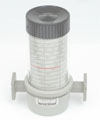 |
The HP P532A Frequency Meter |
1950s' |
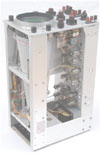 |
The HP 122A Oscilloscope |
1970s' |
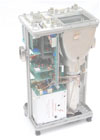 |
The HP 1745A Oscilloscope |
1980s' |
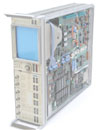 |
The HP 1980A Oscilloscope |
1970s' |
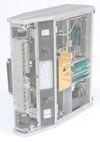 |
The HP 4342A Q Meter |
1960s' |
 |
The HP 2116B Computer |
1970s' |
 |
The HP 9825 Desktop Computer |